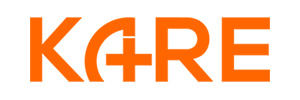DOH & Governor’s Website – New Executive Orders
Here are the new items from the DOH and Governor’s Websites:
New Executive Orders:
https://www.governor.ny.gov/executive-order/no-11-declaring-disaster-emergency-state-new-york End date January 15th, 2022
The COVID-19 global pandemic has been declared a Public Health Emergency of International Concern by the World Health Organization since early 2020;
The United States Health and Human Services Secretary declared a public health emergency for the entire United States to aid the nation’s healthcare community in responding to COVID-19 on January 31, 2020;
New York is now experiencing COVID-19 transmission at rates the State has not seen since April 2020;
The rate of new COVID-19 hospital admissions has been increasing over the past month to over 300 new admissions a day;
The state must pursue a coordinated approach to ensure hospital capacity statewide is able to meet regional needs;
The State government must support the municipalities and counties in their efforts to facilitate and administer vaccinations and tests for COVID-19, and to prevent the virus from continuing to spread at such rates;
A disaster has occurred in New York State, for which the affected local governments are unable to respond adequately, and the Governor declared a State disaster emergency for the entire State of New York through January 15, 2022
https://www.governor.ny.gov/executive-order/no-42-continuing-declaration-statewide-disaster-emergency-due-healthcare-staffing End date December 26th
There are staffing shortages in hospital and other healthcare facilities and they are expected continue;
Severe understaffing in hospitals and other healthcare facilities is expected to continue to affect the ability to provide critical care and to adequately serve vulnerable populations;
There is an immediate and critical need to supplement staffing to assure healthcare facilities can provide care;
The Executive Law, extends the state disaster emergency as set forth in Executive Order 4, as continued in Executive Order 4.1, and continue the terms, conditions, and suspensions contained in Executive Orders 4 and 4.1, until December 26, 2021.
From the Governor’s Pressroom:
Through an Executive Order signed by Governor Hochul, the Department of Health will be allowed to limit non-essential, non-urgent procedures for in-hospitals or systems with limited capacity to protect access to critical health care services. Limited capacity is defined as below 10% staffed bed capacity, or as determined by the Department of Health based on regional and health care utilization factors. The new protocols will begin on Friday, December 3, and will be re-assessed based on the latest COVID-19 data on January 15. The Executive Order will also enable New York State to acquire more quickly any critical supplies to combat the pandemic.
https://www.governor.ny.gov/news/statement-governor-kathy-hochul-new-covid-variant New Omicron variant – wear a mask in indoor public places, use proper hand hygiene, get tested, and stay home when sick ,get vaccinated and get the booster if fully vaccinated.
New Emergency Regulation:
https://regs.health.ny.gov/sites/default/files/pdf/emergency_regulations/Personal%20Caregiving%20and%20Compassionate%20Caregiving%20Visitors%20in%20Nursing%20Homes%20and%20Adult%20Care%20Facilities_2.pdfhttps://regs.health.ny.gov/sites/default/files/pdf/emergency_regulations/Personal%20Caregiving%20and%20Compassionate%20Caregiving%20Visitors%20in%20Nursing%20Homes%20and%20Adult%20Care%20Facilities_2.pdf
Here at a few items included in the emergency regulations:
Definition of “personal caregiving visitor” means a family member, close friend, or legal guardian of a resident designated by such resident, or such resident’s lawful representative, to assist with personal caregiving or compassionate caregiving for the resident. Personal caregiving is defined as care and support of a resident to benefit such resident’s mental, physical, or social well-being, and compassionate caregiving is defined as personal caregiving provided in anticipation of the end of the resident’s life or in the instance of significant mental, physical or social decline or crisis. Facilities should look at situations in which a resident is eligible for a compassionate caregiving visitor and the requirements for screening compassionate caregiving visitors prior to their entry into the facility.
The facility shall develop written policies and procedures to ask residents, or their designated representatives in the event the resident lacks capacity, at time of admission or readmission, or for existing residents within fourteen days of the effective date of this paragraph, which individuals the resident elects to serve as their personal caregiving visitor during declared local or state health emergencies.
A resident shall be entitled to designate at least two personal caregiving visitors at one time.
(3) The facility shall maintain a written record of the resident’s designated personal caregiving visitors in the resident’s case management record, and shall document when personal caregiving and compassionate caregiving is provided in the case management record.
(4) As part of its ongoing review of a resident’s case management needs, the facility shall regularly inquire of all current residents, or their designated representative if the resident lacks capacity, whether the facility’s current record of designated personal caregiving visitors remains accurate, or whether the resident, or their designated representative if the resident lacks capacity, wishes to make any changes to their personal caregiving visitor designations. The facility shall update the resident’s case management record with the date the facility sought updates from the resident and indicate any changes to the resident’s personal caregiving visitor designations therein. Such inquiries shall be made no less frequently than every six months and upon a change in the resident’s condition; upon review of a facility’s visitation policies and procedures, the Department may also require the facility inquire of any resident whether the facility’s current record of designated personal caregiving visitors remains accurate.
(5) The facility shall require all personal caregiving visitors to adhere to infection control measures established by the facility and consistent with any guidelines from the Department, or in the absence of applicable Department guidance, consistent with long term care facility infection control guidelines from the U.S. Centers for Disease Control and Prevention.
NYSHFA/NYSCAL CONTACTS:
Lisa Volk, RN, B.P.S., LNHA
Director, Clinical & Quality Services
518-462-4800 x15
Jackie Pappalardi, RN, BSN
Executive Director
518-462-4800 x16




